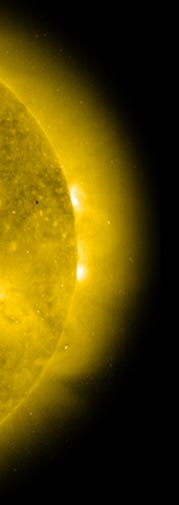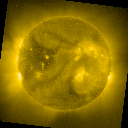



|
Coronal Holes The sun is continually releasing hot gases from its surface, a steady stream of particles—mostly protons and electrons—known as the solar wind . The solar wind flows out from the sun especially strongly through coronal holes. Ordinarily, magnetic field lines at the sun’s surface form closed loops that keep gases contained. Coronal holes are places where magnetic field lines don’t close back on themselves, but instead stick straight out into space. This leaves an open channel, out of which the solar wind can blast unobstructed. Coronal holes make for a gusty solar wind. For example, the solar wind usually leaves the sun at speeds of around 250 miles (400 kilometers) per second, but solar wind leaving through the center of a coronal hole travels much faster, up to 500 miles (800 kilometers) per second. When these solar wind particles reach the earth—which takes two to four days, depending on their speed—modest geomagnetic storms can result. High-speed wind gusts can also disturb satellites in earth orbit. |
|
|
© Exploratorium

